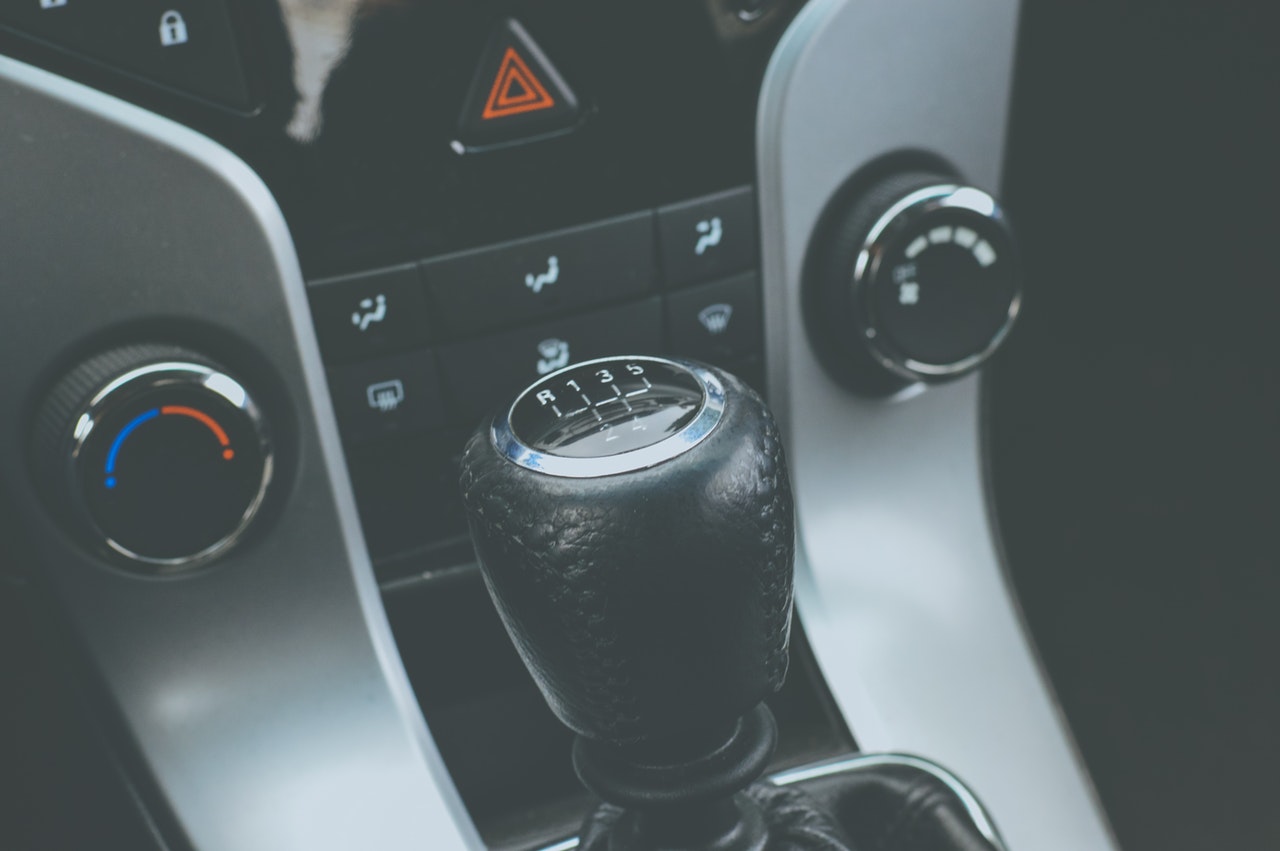Safe Driving Behind All Types of Wheels
Driving has become something that we more or less take for granted. It is a habit that we have developed to help us with our daily lives. Whether it be taking the kids to and from school or going to work, driving should be viewed as one of our most prized privileges. For any of you who have ever lost your driving privileges, you know how difficult it can be to get to where you need to go.
There are many ways to lose your driving privileges, but there are also many avenues for keeping them. For example, one of the best things you can do to learn about the various ways to maintain your driving privileges is by taking part in an online traffic school California permit class. Also, if you have acquired a traffic violation, you should consider going to traffic school so that the violation does not stay on your driving record. For now, let’s take a look at the oilfield and how traffic violations play a huge part in oilfield fatalities.
What Do You Think About It?
Did you know that thinking while you are driving can actually be a problem when your thoughts are focused on something either than properly driving your car? When you aren’t focused on the things going on around you, such as the speed of the cars in front of you or whether you have fastened your seatbelt, this greatly increases your odds of being involved in an accident and getting injured. In fact, speed and seatbelt use just so happen to be the two largest contributing factors to oil-field related deaths. One might think that getting hurt on the rig might be the number one contributor, but it isn’t.
A Closer Look at the Data
The decade that took place between 2003 and 2013 was one that saw unprecedented growth in the oil and gas extraction industry. The size of the workforce doubled and saw an increase of 71 percent in the number of rigs being drilled. The CDC analyzed data relating to fatal occupational injuries in this industry and found that more than 33 percent of worker fatalities in the oil and gas extraction industry were caused by transportation incidents.
When looking at the details involved in these accidents, it is clear to see that there is a lack of attention contributing to the fatalities, such as speeding down the road at 70+ mph and not slowing down when getting close to town and the speed limit lowers to 35-45 mph. Data shows that the biggest contributors to these accidents are not related to road or weather conditions. Instead, they are driver-behavior related:
• Failure to control speed
• Lane change-passing
• Driver fatigue
• Driver inattention
• Faulty evasive action
What Action Is Being Taken?
Fortunately, these data points and statistics are leading to positive action being taken by a variety of coalitions, including the Permian Road Safety Coalition, which is working in conjunction with the Texas Department of Transportation, as well as with other industry experts, to assess the causes of fatalities and properly address them.
For example, they have studied why drivers still after all these years are failing to wear their seatbelts. The truth is, though, this action is simply a bad habit. Oilfield workers get in and out of their vehicles numerous times throughout the day, making it a nuisance to many of them to put on and take off their seatbelt. This type of bad habit must be altered, and thankfully, a simple in-the-truck reminder is all it takes to get drivers to start wearing their seatbelts. Such reminders can come through an In-Vehicle-Monitoring Solutions (IVMS) program.
What Is an IVMS Program?
This type of program is becoming more popular because it helps companies curb recordable driving incidents. The system will provide immediate feedback to drivers when they are taking part in one or more activities that put them at risk for an accident or injury, such as not wearing their seatbelt or speeding.
The Conclusion
It is important to note that new workers to the oilfield have a greater chance of being involved in an accident because of a lack of experience in driving in the oil patch, as well as inexperience in driving industry-specific equipment. This is why it is all the more important for fleet vehicles to be properly monitored with an IVMS.
Best Way to Drive: In Shoes, Socks or Barefoot?
Everyone has their own best way to drive, right?
Though true, we’re more than willing to bet that most drivers get behind the wheel with two shoes on their feet. However, we’d be naive to think that this is the only way that people drive. Yes, there’s certain to be people out there that drive in just their socks or even barefoot for one reason or the other. While this is certainly a more unusual way of pushing the accelerator and brake pedals, to each their own. This lighthearted post will look at the pros and cons of driving in your shoes, bare feet, and socks. Read on for more.
Driving Barefoot

Despite what you may think, driving barefoot is actually legal in every state in the United States. Despite its legality, barefoot driving typically isn’t something that’s advised. We’ll start with the cons of barefoot driving:
• Slippage: Your feet are more likely to slip off the pedals, which makes it more likely that you’re a threat to other drivers on the road. Hence, barefoot driving may not be the safest way to drive. Slippage can increase in wet conditions.
• No shirt, no shoes, no service: If you are driving barefoot to a commercial entity, you best have a pair of shoes on you. That’s because you’re unlikely to be permitted access to any business if they follow the “no shirt, no shoes, no service” rule.
We can’t really come up with any pros to barefoot driving other than it may be more comfortable than wearing socks or shoes, and it can prevent your feet from sweating in hot temperatures.
Driving in Socks

Because it’s legal to drive barefoot, it’s also legal to drive with just your socks on. Again, it’s probably not recommended, but we’d imagine that it’s a step up from driving barefoot when it comes to keeping traction on the pedals. It may also be more comfortable than just plain barefoot driving.
The cons, however, are similar to barefoot driving in that you’re not going to be granted access to any business that goes by the “no shirt, no shoes, no service” rule. Plus, you’re likely to get your socks dirty and/or wet and damp depending on the weather conditions. Who wants to walk around in nothing but wet socks for the rest of the day?
Driving in Shoes

You don’t need to go through defensive driving in Texas to know that driving with shoes on your feet is considered the safest way to operate a motor vehicle. Not only will you not need to worry about being denied access to any business that you’re visiting, but the shoes provide a nice buffer between your feet and whatever you’re walking on. So, if it’s raining or snowing outside, you don’t have to worry about damp socks or damp bare feet as you’re walking from your home to your vehicle or vice versa. As we said, you probably don’t need to take a driving safety course to realize that driving with shoes on is the best way to go. However, there may be some cons:
• Discomfort: Maybe your feet sweat easily, or you don’t have any pairs of really comfortable shoes? It can be enticing to kick them aside and go barefoot or with socks.
• Beware of flip flops: We don’t consider flip flops shoes. And flip flops may pose a threat when driving, as they can slide off the feet easily and potentially wedge themselves underneath the pedals – thus becoming a safety hazard.
You know your own feet and driving skills better than anyone else. Make sure you choose wisely, and what is most safe for your fellow drivers out on the road.
Why Take a Defense Course?
One of the unfortunate facts of life is that we are at the mercy of others. It does not matter how nice or civil you are. If you have the misfortune of crossing paths with a malevolent or careless individual, there is a chance you will endure harm. This is precisely why you need a solid line of defense.
The Value of Taking a Self-Defense Course
All sorts of self-defense courses are available, from traditional karate to Brazilian Jiu Jitsu, Krav Maga and so on. The common theme amongst these courses is that considerable preparation is necessary to stay safe and avoid harm. There is a good chance you will eventually encounter a physically aggressive person at some point in your life. From purse-snatchers to drunks looking for a fight and beyond, some people are willing to engage in physical confrontations with completely innocent victims. It is important to recognize this danger and prepare accordingly. Complete a self-defense class and you will have the confidence you need to go out in public and do as you wish. This is especially true for women, seniors, individuals without a large frame and others who might be considered to be easy targets.
Keep Your Vehicle Safe with a Defensive Driving Course
You can protect your vehicle with a defensive driving course just like you can protect your body with a self-defense course. It is quite concerning to think about the fact that you can follow all the rules of the road, maintain a moderate rate of speed and be extremely cautious only to endure an auto accident due to another driver’s negligence. Take a defensive driving course and you will greatly reduce the odds of such an accident. This course teaches you how to drive in a defensive manner that prevents accidents, tickets and road rage.
If you haven’t taken a defensive driving course in the past year, it is time to sign up for one, especially if you live in NY, NJ or a state where your auto insurance company will offer you a huge discount for taking the course. Also, there is a good chance you have forgotten some of the subtle rules of the road and strategies to avoid collisions, tickets and other unpleasant incidents while behind the wheel.
Keep Yourself Safe with a Defensive Course
A defensive driving course will serve as a valuable refresher on what to look out for while on the roads and highways. It will also boost your driving prowess to reduce the chances that you cause an accident that harms others, their vehicles and your own person or vehicle. In the end, a defensive driving course has the potential to save you thousands of dollars in automobile repair costs and hundreds or thousands of dollars on potential insurance hikes resulting from accidents. Most importantly, learning how to drive defensively will greatly reduce the odds of a painful injury that spurs costly medical treatment and might even prevent you from working.
Protect Yourself on and off the Road
Your defensive driving course instructor will teach you valuable tactics to avoid damage to your vehicle as well as your body. Think of defensive driving as a self-defense course for your body when positioned inside of a vehicle. You are still in danger of physical harm even though the party at fault does not mean to harm your person. This educational driving course is exactly what you need to avoid a painful accident when traversing the crowded roads. The strategies you learn just might make the difference between a nasty accident that harms the occupants in your vehicle and narrowly escaping a collision, allowing you to make it to your destination unharmed.
How to Sell a Car in Texas
If you are planning on selling a vehicle in Texas, you will have to fill out some paperwork. Sweat the subtleties of the transaction now and you won’t have to deal with them down the road. Let’s look at the paperwork that must be submitted to the Texas Department of Motor Vehicles to officially transfer ownership of your vehicle. We’ll also touch on additional documents necessary to sell a vehicle in Texas.
Title Transfer
The state of Texas requires that your vehicle’s title be transferred to the new owner. To make this transfer, you must fill out the title assignment found on the back of your vehicle’s official title certificate. If you fail to perform a legal title transfer when selling your car, there will be consequences. As an example, it is possible that you will be held responsible for subsequent crimes and violations committed in the vehicle. It is prudent to go to the nearest county tax office with the vehicle buyer to guarantee that the application for the new vehicle title is filed. If you need a certified copy of your automobile’s title from the Texas Department of Motor Vehicles, fill out the VTR-34 form. You can download this form from the DMV’s online library of forms.
Additional Documents Necessary to Sell a Car in Texas
As a seller of a vehicle, you must provide specific documents to the buyer. These documents include the bill of sale, a valid vehicle title, the completed title assignment with signature and odometer disclosure. Be sure to make copies of these documents to store in your records. You never know if any technical or legal challenges will pop up in the future. At this point, it is the buyer’s responsibility to complete the remainder of the required documents and pay the fee necessary to register the vehicle in his name in the state of Texas.
Supplemental Material That Will Help You Sell Your Vehicle in Texas
Texas has nuanced laws concerning vehicle efficiency and safety. Therefore, most vehicle buyers ask sellers for an in-depth vehicle history report before agreeing to a sale. Such a report provides information about the vehicle ranging from prior accidents to major repairs, odometer alteration and/or instances of theft. If you have endured any sort of accident, consider enrolling in a TX driving safety course. This course will enhance your defensive driving skills. Such a course might reduce your automobile insurance rate. It is even possible that this course will remove points from your driving record after a speeding ticket or other violation. Have your vehicle history report on-hand so you can show it to the buyer immediately after he requests it. Furthermore, having the vehicle history report on-hand makes it that much easier to market your vehicle and ask the highest possible price.
Transfer the License Plates
You must remove the license plates from your vehicle before the buyer accepts the keys and drives off. It is possible to transfer these license plates to another vehicle you own. Reach out to your nearest county tax assessor collector’s office for details on such a transfer.
Don’t Forget the Bill of Sale!
It is necessary to document the actual sale of your vehicle. The transaction is recorded on a “bill of sale”. This document should include all essential information about the seller, the buyer, the automobile and the agreed sale price. Sign and date the bill of sale and request that the buyer does the same. Make copies for yourself and the buyer. Keep this document in your records as it is proof of the vehicle sale transaction.
The Pros & Cons of Manual vs. Automatic Transmission
Most people do not consider the purchase or lease of a vehicle with a manual transmission. Also known as a “stick shift,” the manual transmission is becoming increasingly rare. However, there are some advantages to driving a vehicle equipped with a manual transmission. Let’s look at the positives and negatives of manual vs. automatic transmissions to help you select the style that is best for your particular needs and desires.
The Benefits of a Manual Transmission

One of the primary benefits of a stick shift is improved fuel economy. Most vehicles equipped with a manual transmission achieve higher mpg than vehicles with an automatic transmission. Furthermore, vehicles equipped with a stick shift tend to cost less than vehicles with an automatic. Another key advantage to owning or leasing a vehicle with a manual transmission is that it is comparably secure. If your vehicle is broken into, the odds of the thief knowing how to drive a stick shift are fairly low. A manual transmission really is an anti-theft device in and of itself.
Yet the primary motivation for selecting a vehicle with a stick is feel. Controlling the shifts between gears makes one feel as though he is a race car driver. It is a ton of fun to upshift and downshift while traversing the roads. If you get a vehicle with a manual transmission, you will likely be tempted to get to fourth or fifth gear as quickly as possible and drive at a high rate of speed. It could result in a speeding ticket. If you are nabbed speeding, enroll in defensive driving for an auto insurance discount. You can also enroll in traffic school to have your ticket dismissed or reduced.
The Drawbacks of a Manual Transmission

The main drawback of a stick shift is the learning curve. Most people do not want to invest the time and effort required to learn this style of driving. Furthermore, constantly shifting between gears is somewhat tedious. If you aren’t particularly skilled at operating a stick, you might make a mistake that leads to an accident or a traffic ticket. Those who lack coordination might find it difficult to use both arms and legs in unison on the steering wheel, stick shift, gas and clutch pedals. Another problem with the manual transmission is that few people know how to operate it. If you have one too many drinks, feel sick or are injured, the odds of someone in your group being able to operate a stick shift are low.
The Benefits of an Automatic Transmission

The beauty of an automatic transmission is that the vehicle shifts through the gears on your behalf. There is no need to divert your attention to a clutch pedal or stick shift. You can keep both hands on the steering wheel at all times and consequently, reduce the odds of an accident. Also, consider a situation in which you can’t drive your vehicle due to an injury or sickness. If you have a friend or family member with you, this individual can drive your vehicle on your behalf. Another advantage of the automatic transmission is that it makes stop-and-go traffic tolerable. The same cannot be said of a vehicle with a manual transmission that requires a constant pressing of the clutch and shifting between gears to go from a complete stop to forward movement repeatedly during heavy traffic.
The Negatives of an Automatic Transmission

Automatic transmissions cost more than the manual variety. Automatic transmissions also provide less miles per gallon than manuals as they use a torque converter to alternate between gears. Automatic transmissions typically require more maintenance than manuals due to their comparably complex engineering. Thieves are much more likely to steal a vehicle with an automatic transmission as it does not require any sort of specialized knowledge or skill to operate.
50 Years Of Safe Driving For ‘UPS’
Meet Ron “Big Dog” Sowder. Sowder was recently inducted into the UPS Hall of Fame for his record of
safe driving that spans five decades.
That’s right. Sowder joined UPS in 1961 and has stayed safe and sound on the road ever since, despite racking up four million miles and delivering 35 million packages during his thousands of hours behind the wheel. In fact, Sowder made more than 12,000 trips for UPS.
UPS currently has a Circle of Honor for drivers who have gone 25 years being safe behind the wheel, but Sowder is the first in the history of UPS to go five decades accident-free.
For those of you who have trouble making it through the year without at least being pulled over and warned by the police, Sowder’s accomplishment might seem impossible. But it’s not. Anyone can be a safe driver if they focus on the essentials: Keep your eyes on the road, pay attention and follow the law.
Being a safe driver means doing all those things every time you get behind the wheel and start the ignition. Sowder said in a press release that the quality of driving he sees on the road today is far less safe than it was when he started in 1961. He said he has to be even more vigilant about what other drivers are doing than he does about what he is doing.
By the way, that is the very definition of defensive driving.
Sowder said he regularly sees drivers using their cell phones; talking, texting, reading and putting on make-up as they cruise down the highway. None of which qualifies as safe driving as far as we are concerned (or police are concerned either.)
If you want to rack up the safe driving miles like Sowder there is no time like the present to get started. Take a defensive driving course, learn the law and practice your skills regularly. There is no trick to being a safe driver. All it takes is a lot of common sense employed every time you get behind the wheel.
Image: David Castillo Dominici / FreeDigitalPhotos.net
NY Cracks Down on Distracted Drivers
Governor Cuomo Signs Law Strengthening Enforcement Against Drivers Caught Using Handheld Electronic Devices
New Legislation Makes Using Handheld Electronic Devices while Driving a Primary Traffic Offense; Additional Regulation will Increase Penalty from 2 Points to 3 Points for Cell Phone and Electronic Device Usage While Driving
Albany, NY (July 12, 2011) Governor Andrew M. Cuomo today signed a new law that strengthens the enforcement against drivers who use handheld electronic devices for activities such as texting while a vehicle is in motion. The legislation makes this action a primary traffic offense, giving law enforcement the power to stop drivers solely for engaging in this activity. The Governor also announced today that he will increase the penalty for using a cellular phone without a hands-free device or a handheld device while driving from two to three points through changes in state regulations. “I am proud to sign this bill today, both as the Governor and as a father of three teenagers,” Governor Cuomo said. “It’s plain and simple: distracted driving leads to tragedies that have affected families all across New York.
This new law will help ensure that drivers keep their eyes on the road and their hands on the wheel. I thank Senator Marcellino and Assemblyman Weisenberg for their hard work on this legislation.” Before this law, it was illegal for drivers to use handheld electronic devices while their vehicle was in motion, but it was a secondary traffic offense — meaning a driver had to be stopped for another violation in order to receive a ticket. The new law makes it a primary traffic offense and it will go into effect immediately. The monetary penalty for a violation of this law continues to be a fine of up to $150. Illegal activity includes holding an electronic device and:
- Composing, sending, reading, accessing, browsing, transmitting, saving, or retrieving electronic data such as e-mail, text messages, or webpages
- Viewing, taking, or transmitting images
- Playing games
The law does not penalize drivers using a handheld electronic device that is affixed to a surface or using a GPS device that is attached to the vehicle. The law also exempts police officers, fire fighters, or emergency vehicle drivers while they are performing their duties. In addition, a driver is exempt from the law if the driver is communicating or attempting to communicate with law enforcement, the fire department, or medical personnel during an emergency situation.
New York State Senator Carl L. Marcellino said, “With this new legislation, New York State driving laws have finally caught up with today’s technology. Our new law will strengthen enforcement against drivers using handheld electronic devices and help keep drivers, passengers, and pedestrians safe. I am proud to stand with Governor Cuomo as he signs the bill I sponsored into law and we finally make distracted driving a serious offense.” New York State Assemblyman Harvey Weisenberg said, “As a former police officer, I’ve seen the devastation caused by distracted drivers. Today, we are giving law enforcement the tools they need to keep our roads safe and prevent future accidents. These changes will save lives. I’d like to thank Governor Cuomo for supporting this law and I look forward to our continued work together.”
New York State Police Superintendent Joseph A. D’Amico said, “Motorists should now realize the dangers of operating a motor vehicle while texting on mobile devices or talking on a cell phone without an approved hands-free device. This change in the statute will allow law enforcement to continue the battle against distracted driving. Distracted driving is dangerous driving and drivers must reduce diversion and behaviors that take their attention from the road. Attentive, responsible, defensive driving is the key to avoiding crashes and keeping our highways safe.” New York City Police Commissioner Raymond W. Kelly said, “It’s no secret that violations of the no-texting and no use of hand held devices while driving rules are widespread despite their nexus to accidents, including fatalities. This legislation is a welcome step toward saving lives.”
President of AAA New York State Thomas Hoy said, “With nearly 2 trillion text messages sent last year, texting represents the most dangerous form of distracted driving. We applaud the Governor and lawmakers for stiffening the consequences for those who jeopardize the rest of us with their careless conduct.” The National Highway Traffic Safety Administration reports that 16% of fatal accidents in 2009 were due to distracted driving and 20% of people injured during a crash were involved in a crash where distracted driving was reported. A study by the Virginia Tech Transportation Institute found that truck drivers who were texting were 23 times more at risk of a crash or near crash.
Different Insurance for Different Stages of Your Life
Your age impacts your insurance rate. A young driver is charged because they are a higher risk factor. Rates for older drivers take slower reflexes and declining vision/hearing into account. Your stage of life is a key to your insurance rate, but discounts are available for every stage of life. When you know all of the available discounts, you empower yourself to keep your auto insurance rate under control.
Young Drivers – Young drivers need discounts, but there are not many available. Is your student on the honor roll? Honor roll students qualify for discounts with many companies. Other companies offer safe driver programs for teens that may include completing a defensive driving course. Check with your agent to see what discounts are available in your state and with your auto insurance company.
Adult Drivers – A homeowner discount is one of the biggest discounts offered by auto insurance companies. With some companies, this discount only requires your own your home. With other companies, it is a discount given when you have auto and homeowner insurance with the same company. Ask your insurance agent if a security system reduces your auto policy premium. The best way for an adult driver to ensure low car insurance rates is to keep a clean driving record. First accident forgiveness and safe driver discounts are available when a driver has a clean record over a long period of time.
Senior Drivers – When you reach age 55, ask your agent about special discounts available for seniors. If there is a safety class discount available, call your local Department of Motor Vehicles for a list of approved defensive driving courses. When you successfully complete the safety class, (sometimes referred to as traffic school or a defensive driving school), give the certificate of class completion to your auto insurance agent. Your agent will enter the certificate information into the system and you will see the decrease on your next bill.
Melrose Place Star Pleads Not Guilty to Manslaughter
The star from the original
Melrose Place continues to make headlines following her DUI car crash last June in New Jersey, which resulted in the death another motorist.
Amy Locane-Bovenizer is facing manslaughter charges.
The 39-year-old mother of two pleaded not guilty to aggravated manslaughter and assault by auto charges, reports say.
Somerset County prosecutors say Locane-Bovenizer’s SUV hit the vehicle of 60-year-old Fred Seeman as he was turning into his driveway, breaking 10 of his ribs and killing his wife.
Officers detected alcohol on Locane-Bovenizer’s breath and arrested her, but she was shortly freed after posting $50,000 bail.
We talked about this subject before, but it never ceases to amaze and anger us. We come across many people from different walks of life in our Traffic School.
Especially when we teach our classes in Hollywood we see many celebrities come through our doors… Yes, celebrities too get traffic tickets. We’re all human and we totally understand an occasional speeding ticket. But being a celebrity comes with certain responsibilities. And while reckless driving (especially under the influence) is non- excusable for anyone…it’s especially troubling to see another celebrity making headlines… For crying out loud… if you are going to have few cocktail – enjoy! – But get a Limo – you can afford it!
Insurance Reduction for New York Drivers
New York Drivers pay some of the highest insurance rates in the country. However they are also fortunate to live in a state which is one of the very few in the nation that mandates insurance companies to reduce drivers premium. There is a caveat: a driver must complete a NY DMV approved
Defensive Driving Course. The good news you don’t have to spend six hours in a class. Courses like ours, Improv Defensive Driving Course, are available online and can be taken at your pace. Below are a few common questions about the course:
Q. After completing the Defensive Driving Course (aka as PIRP – Point and Insurance Reduction Course), how do I receive the insurance reduction?
A. Upon completion Improv’s Defensive Driving course, we will issue you certificate of completion. If you present your certificate to your insurance company or agent within 90 days after course completion, your liability and collision premium reduction will begin immediately, retroactive to the date you completed the course. If you present your certificate more than 90 days after course completion, the insurer may issue the premium discount effective from the date presented.
Q. Will the PIRP course prevent my insurance company from raising my premiums?
A. No. Insurance reduction does not prevent general premium increases, or premium increases due to violations or accidents. However It provides a 10% reduction for three years, from the base rate of your current liability, no-fault and collision premiums.
Q. What if more than one person named on a policy completes the PIRP course?
A. The insurance premium reduction applies to all motor vehicles principally operated by the motorist who completes the course. The reduction can be applied to only one driver for each covered vehicle.
Q. If I complete a DMV approved motorcycle safety/accident prevention course, does the insurance reduction benefit extend to my automobile coverage?
A. Yes. The reduction applies to the liability and collision insurance premiums for both your motorcycle and automobile.
Q. Will young operators (under 18) and drivers participating in assigned risk pool receive the insurance premium discount?
A. Yes. Any insured driver who is the principal operator and completes a Point & Insurance Reduction Program course will receive the reduction.
Q. If a youthful operator is already receiving a driver education reduction, will the PIRP discount also be applied?
A. Check with your insurance company or agent to find out if both reductions will be given at the same time
Texting-and-driving bill dies
Senate deadlocks on measure to ban sending messages from road. Arizonans will not be banned from texting while driving, at least this year.
Proposed legislation that would have prohibited typing, reading or sending text messages and e-mails while driving on a state highway died with an 11-11 vote by the Senate on Tuesday. The bill would not have prohibited talking on the phone while driving and would have allowed drivers to type a name or telephone number to make a call.
This is the second year in a row the effort to ban texting while driving has failed despite support from dozens of organizations, including cellphone-company representatives. The Arizona Citizens Defense League opposed the measure.
Legislators who voted against it acknowledged that texting while driving is dangerous, but said they opposed unnecessary government restrictions.
Sen. Ron Gould, R-Lake Havasu City, called the legislation a “nanny bill” and “feel-good legislation” that would have banned a practice already covered under current laws against reckless driving.
Supporters said the bill is about saving lives. They said parents would be able to tell children that texting while driving is illegal.
“It’s such a dangerous activity to be texting while you’re driving, that outlawing it would seem to be a given,” said Sen. Barbara Leff, R-Paradise Valley.
Phoenix banned texting while driving within its city limits in 2007. Phoenix police Officer Luis Samudio said that about nine citations for texting while driving have been issued since the law went into effect.
“It is minimal,” he said.
Read more here
If you have recently taken some type of traffic school you know its very dangerous to text or talk while driving. Its been proven over and over. So please practice safe driving.
New Data and Child Safety Seat Warnings
According to research carried out by the National Highway Traffic Safety Administration, it seems that fewer children died last year in roadway crashes. Yet, the Department of Transportation (DOT) is cautioning parents and caregivers alike to retain the use of child safety seats or booster seats. The data for child fatality point out that the leading cause of child death was vehicle crashes. From ages between three and fourteen, young children lost their lives and up to 490 were injured each day in 2009.
It is a known fact that child safety seats saves lives and parents and caregivers are encouraged to use this safety measure. Avoid graduating too quickly to booster seats or passenger belts, until the child is able to fit properly in both. Once your child outgrows their child safety seat, fit them into a booster seat which is the next level of vehicle safety precaution. Avoid fitting a child to a passenger belt until it fits properly, usually at the age of eight. It is better to remain in a booster seat until the passenger belt fits the child, resulting in fewer roadway deaths and injuries.
Leave no room for mistakes when it comes to the safety of the child every time, on every trip. As someone who works for a n online traffic school, I’m well aware of the significance of not leaving child safety measures to chance. Although we always try to drive home the importance of safe driving here on our comedy traffic school website, child safety is number one!








 Live Chat
Live Chat



